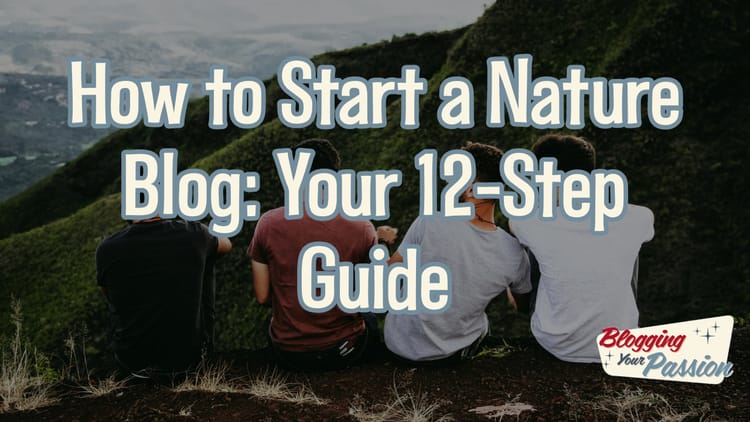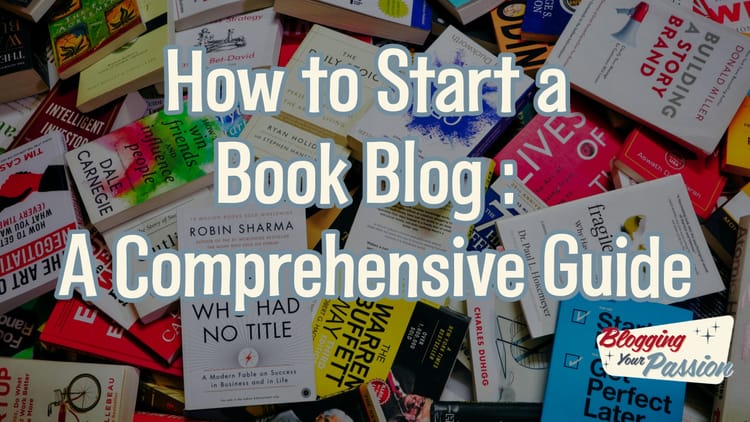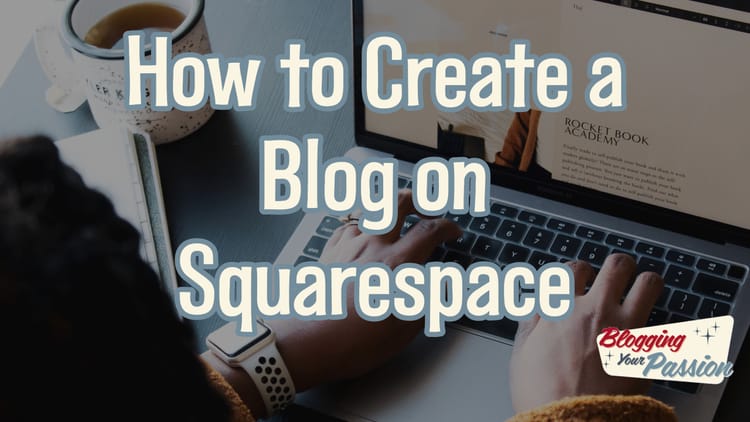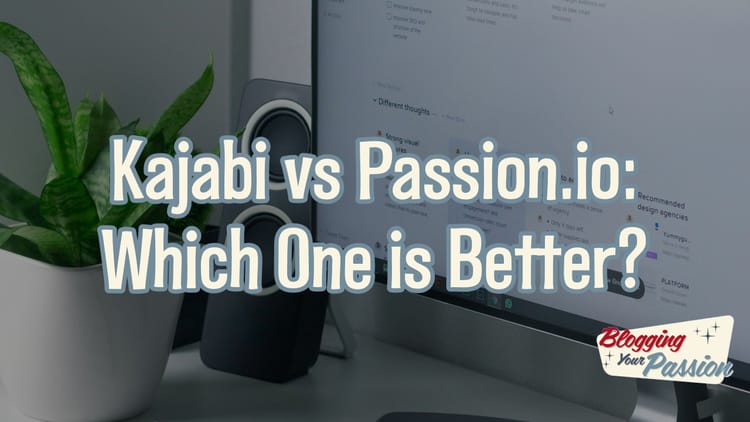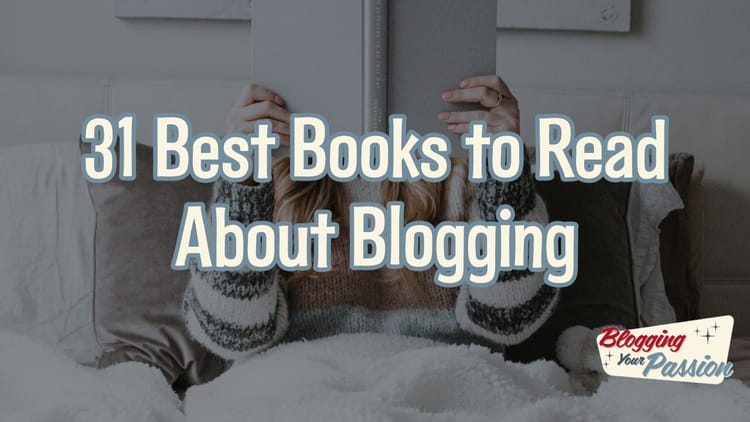How to Begin a Blog for Free: The 5-Step Success Guide

You're eager to learn how to begin a blog for free.
You've been enthusiastic about penning and conveying your ideas to the public.
But where do you start?
Several years ago, I started with a WordPress blog, but it was still complex even then.
To start a blog today is much simpler.
Whether you want to start a personal blog or start making money with your blog, we've got you covered.
In this post, we'll provide you with the tools to launch a successful blog without cost.
From choosing a blogging platform to creating engaging content, we have it all covered!
Ready to jump into our step-by-step guide and learn how to launch a blog without spending money?
Let's get started!
Table of Contents (click to expand)
- Step 1. Choose a Free Blogging Platform
- Selecting the Right Platform for Your Needs
- A Quick Comparison: Systeme.io vs. Other Platforms
- Step 2. Select a Domain Name for Your Blog
- Step 3. Design Your Blog
- Selecting a Theme
- Customizing Colors and Fonts
- Navigational Structure & Layout
- Step 4. Create Content for Your Free Blog
- Step 5. Promote Your Blog Like a Pro
- FAQs About How to Begin a Blog for Free
- Can I start a blog completely free?
- How do I start a blog with no experience?
- How do bloggers get paid?
- How do free blogs make money?
- How do beginner blogs make money?
- Do people still read blogs?
- How much does a blog cost per month?
- Which platform is best for blogging?
- Can anybody start a blog?
- How much does it pay to have a blog?
- Final Thoughts
Step 1. Choose a Free Blogging Platform
Let's get your blog online!
Starting your blogging journey doesn't have to break the bank.
You can begin with a free platform that offers all the essential features you need.
Systeme.io is one such tool, offering an easy-to-use interface and robust functionality for bloggers on a budget.
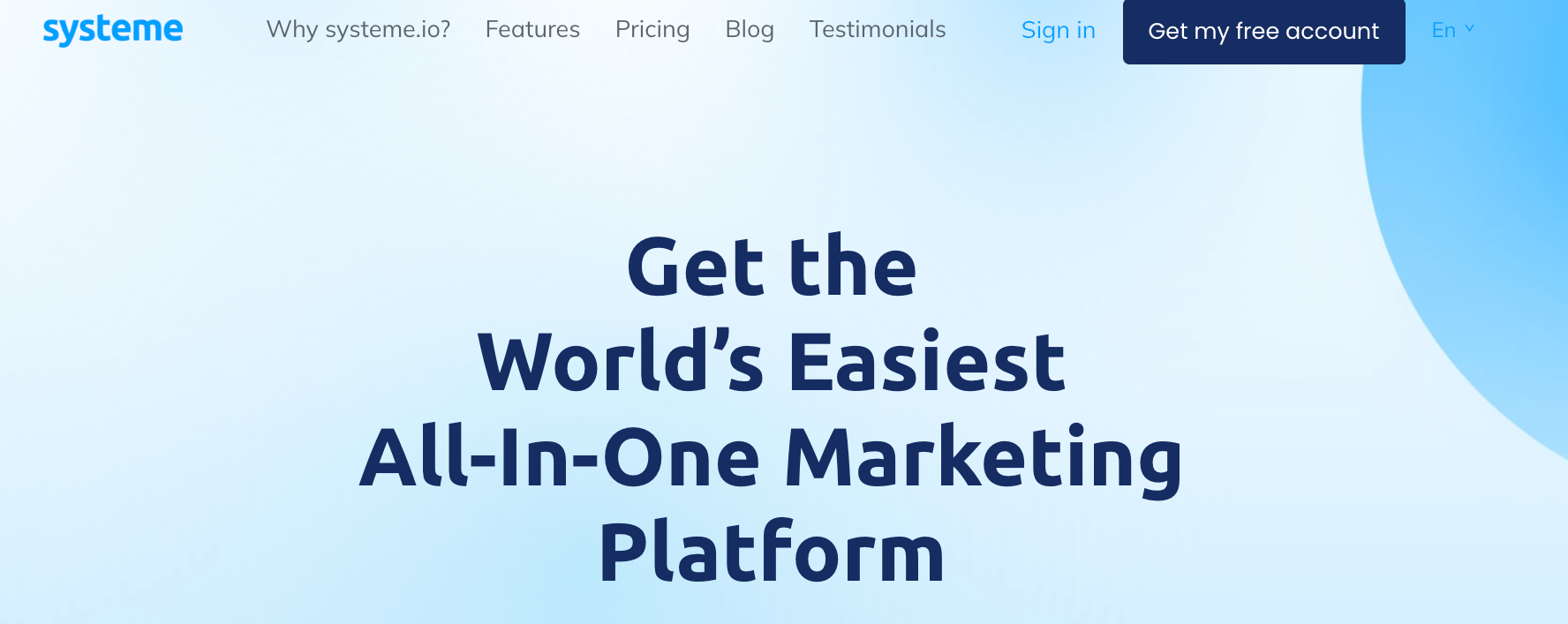
With its forever-free account, Systeme allows you to start blogging before carrying too many expenses in your business.
Selecting the Right Platform for Your Needs
Different platforms cater to different needs, so finding one that aligns with your goals and preferences is crucial.
Consider factors like ease of use, customization options, available support resources, and scalability as your blog grows.
A Quick Comparison: Systeme.io vs. Other Platforms
- User-friendly: Systeme.io is designed with simplicity in mind - perfect for beginners.
- All-in-one solution: Unlike some other platforms, Systeme.io combines blogging tools with marketing automation capabilities under one roof.
- No hidden costs: While many "free" platforms have limitations or require paid upgrades, Systeme.io keeps things transparent by offering free access without sneaky upsells later.
Here's a complete walkthrough video of Systeme.
Making the Most of Your Chosen Platform
To truly harness its potential benefits from any platform, thoroughly explore its full range of features - this includes tutorials or help articles provided by their team.
Tips for Success When Using Free Blogging Tools Like System.IO :
- Get to know the capabilities that come with your blogging platform.
- Stay consistent with your blogging schedule to keep readers engaged and returning for more.
- Use built-in SEO tools to improve search engine visibility and drive organic traffic to your blog.
In short, selecting a free blogging platform like Systeme.io can be an excellent starting point for new bloggers or those looking to save money while maintaining control over their content creation process.
Systeme becomes your content management system for your entire blog.
To begin blogging, you only need to register for your free account with Systeme.io!
Step 2. Select a Domain Name for Your Blog
Choosing the perfect domain name is crucial for your blog's success.
Your domain name should reflect your blog's purpose and be easy to remember.
Here are some tips to help you find the right one:
- Keep it short and simple: Aim for two or three easy-to-spell words.
- Include keywords: Use relevant keywords related to your niche, but avoid stuffing them in.
- Avoid numbers and hyphens: They can be confusing when spoken aloud.
- Select an appropriate top-level domain (TLD): Stick with popular TLDs like .com, .net, or .org.
Need inspiration? Check out Shopify's Domain Name Generator, LeanDomainSearch, or Instant Domain Search.
Also, check if social media handles are available that match your chosen domain name by using tools like KnowEm.

Once you've chosen the perfect domain name, it's time to register it.
You can use a free domain registration service like Freenom or opt for paid services like Namecheap or Google Domains.
With Freenom, you can use the free domain as a custom domain with Systeme.io. Yes, it's completely free!
Remember, your domain name is visitors' first impression of your blog, so make sure it represents you and your content well.
So, secure that blog domain today (and grab that free custom domain while you are at it)!
Step 3. Design Your Blog
Once you get your blog set, it's time to design it.
First impressions matter, and your blog's design is crucial in attracting readers.
That being said, your blog design does not have to be complicated.
To create an eye-catching blog, select a suitable theme, customize colors and fonts, and organize your content for easy navigation.
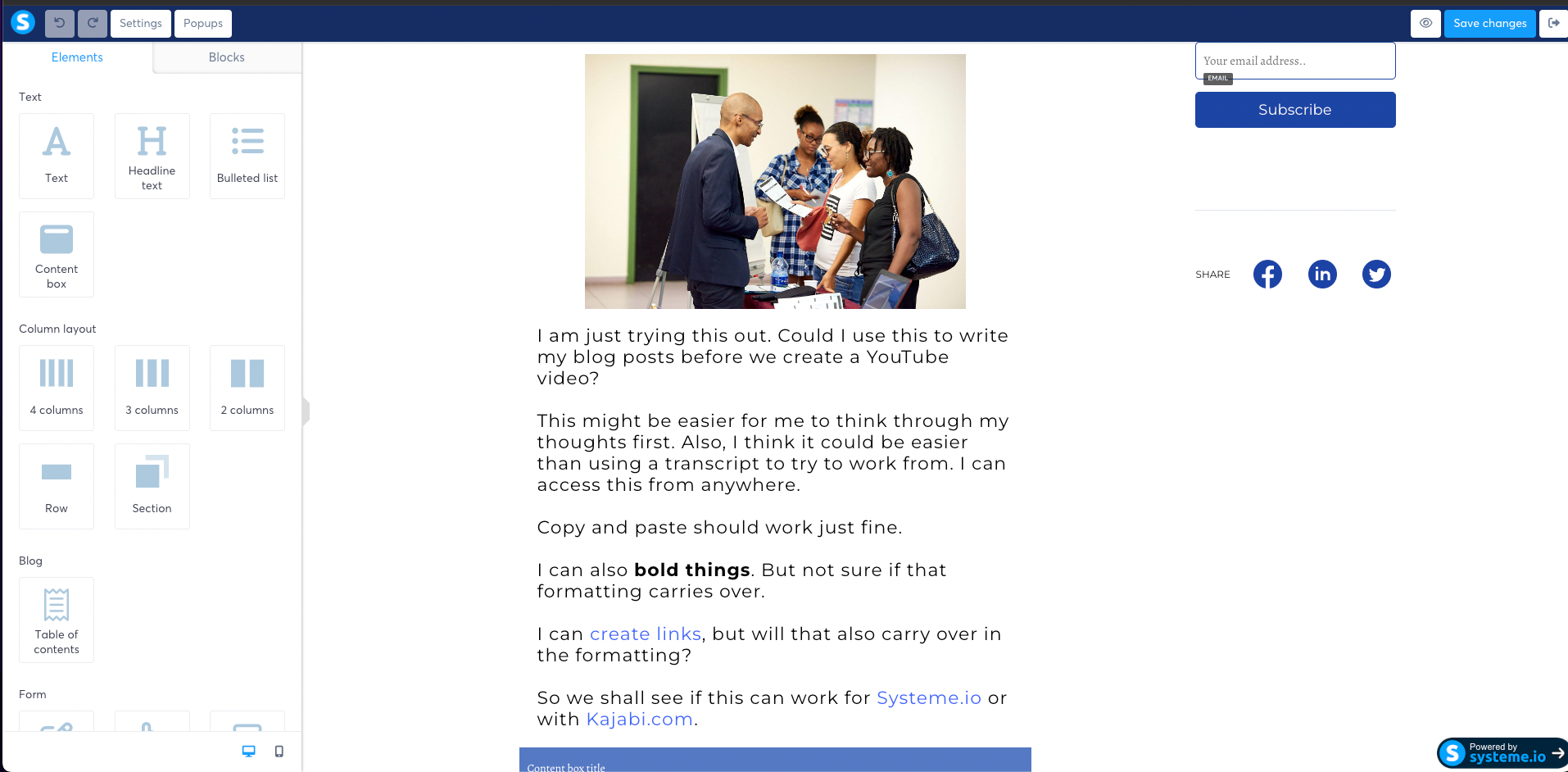
Selecting a Theme
Choose a theme corresponding to your brand image or the message you wish to express through your blog.
Systeme.io offers various free themes that cater to different niches and styles.
Customizing Colors and Fonts
Personalize the look of your blog by choosing suitable colors and fonts.
Use tools like Coolors for color inspiration or browse Google Fonts' extensive library for font ideas.
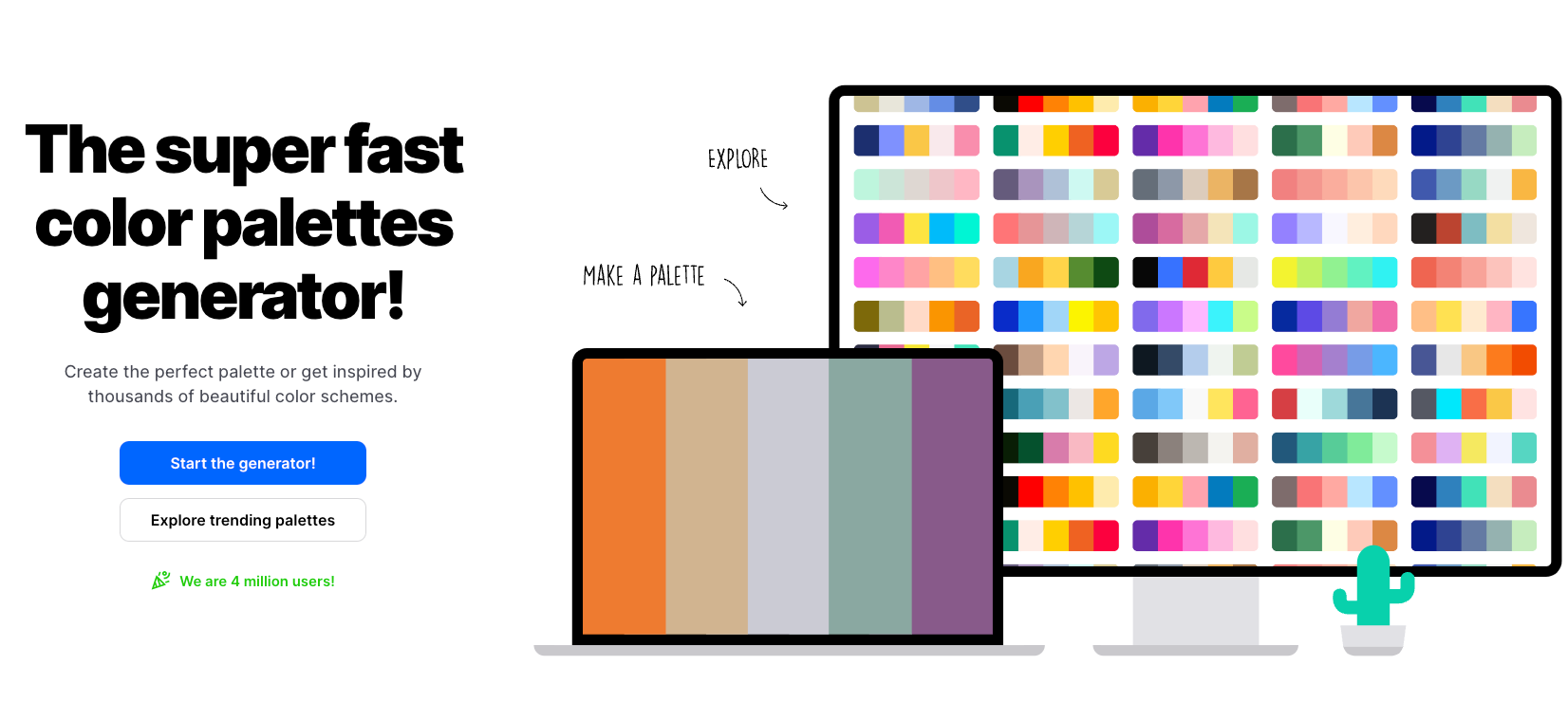
Navigational Structure & Layout
A well-organized layout ensures visitors can easily find what they want on your site.
- Create categories based on topics you plan to cover regularly.
- Add tags relevant to each post.
- Incorporate search functionality so users can quickly locate specific articles.
Other Blogging Tips:
- Maintain consistency in design elements across all pages of your blog.
- Favor simplicity over complexity - too many bells & whistles may distract from the content.
- Aim for responsive design, ensuring seamless user experience across devices (desktop/mobile/tablet).
Start your journey to crafting an aesthetically pleasing and user-friendly blog with these tips.
Step 4. Create Content for Your Free Blog
Writing content is your core, which encourages readers to revisit it.
It's important for an aspiring blogger to learn how to write a blog post that gets results.
Brainstorm topics that align with your blog's purpose and audience interests.
Bon't be afraid to come up with lots of blog post ideas. Publishing regular blog posts is how a blog gains traction.
Take your time with the brainstorming process, as it will make the writing process easier for you down the road.
Publish content that covers every area and answers every question in your niche.
If you don't have a niche, you should choose one. A blog's niche is what makes it attractive.
Make creating content a breeze with a user-friendly editor and built-in SEO tools to optimize your posts for search engines.
Here are some best practices to remember that successful bloggers use:
- Write a compelling blog post title that creates curiosity or promises a benefit to entice readers.
- Weave personal stories or anecdotes into your writing to connect with readers emotionally.
- Break up long paragraphs with subheadings, bullet points, and numbered lists to make content skimmable.
- Add visual interest by incorporating images, videos, infographics, or other multimedia elements in your posts.
- Encourage comments and discussions by asking questions or seeking opinions at the end of your posts.
- Keep older posts fresh and relevant by updating them with new information, links, or images as needed.
- Optimize your content for SEO using keywords naturally throughout the text, meta descriptions, and image alt tags.
Follow these tips to build an engaging blog that attracts readers and keeps them returning for more.
Step 5. Promote Your Blog Like a Pro

You've crafted excellent material; it's time to make the news known and attract viewers.
- Step #1: Share your blog posts on social media platforms like Facebook, Twitter, LinkedIn, and Pinterest.
- Step #2: Optimize your content for search engines with effective SEO strategies, such as keyword research and proper use of header tags.
- Step #3: Engage in online communities related to your niche by participating in forums or commenting on other blogs - remember to include a link to your blog.
- Step #4: Start building an email list and send regular newsletters featuring new blog posts and exclusive content for subscribers.
- Step #5: Promote your blog through guest posting on relevant websites within your industry.
Here are a few more blog promotion tips:
- Consider running paid ads targeting specific keywords related to your niche.
- Network with other bloggers and influencers in your niche.
- Monitor the performance of your promotional efforts using analytics tools like Google Analytics.
Remember, promoting your blog is an ongoing process that requires consistent effort and experimentation. Keep trying new tactics and refining existing ones to find what works best.
FAQs About How to Begin a Blog for Free
Can I start a blog completely free?
Absolutely! Starting a blog can be done entirely for free using various online platforms and services, such as Blogger, WordPress.com, and my favorite Systeme.io.
These user-friendly platforms provide essential tools and customizable templates for beginners, allowing you to create a professional-looking blog without spending a dime.
How do I start a blog with no experience?
Starting a blog with no experience is achievable by following these simple steps:
- Choose your niche: Identify a topic you are passionate about or have expertise in, ensuring it has an audience interested in the subject matter.
- Select a blogging platform: Opt for beginner-friendly platforms such as Blogger, the free WordPress (the .com version), or Wix, where you can set up a blog for free or at a minimal cost.
- Pick a domain name: Create a unique and memorable domain name that resonates with your niche and target audience.
- Choose a web host (optional): If you opt for a self-hosted blog using platforms like WordPress.org, select a reliable web hosting service that fits your budget.
- Install your blog: Follow the platform-specific guides to install your blog and start customizing it using available templates and tools.
- Write compelling content: Craft engaging and valuable blog posts that cater to your audience's needs, keeping SEO practices in mind to improve search engine visibility.
- Promote your blog: Share your posts on social media, engage in influencer collaborations, join niche-specific forums, drive traffic to your blog using Pinterest, and utilize email marketing to grow your readership and build an online community.
- Monetize your blog: Explore various income streams like ads, affiliate marketing, selling digital products, sponsored content, or offering services to start earning money from your blog.
Remember, it's essential to maintain consistency, patience, and a willingness to learn and adapt as you grow your blogging journey.
How do bloggers get paid?
Bloggers have several income streams to earn money from their blogs.
Some of the popular methods include:
- Displaying ads using platforms like Google AdSense.
- Participating in affiliate marketing programs to promote products and services.
- Creating and selling digital products like eBooks or online courses.
- Engaging in sponsored content partnerships with businesses
- And offering services such as coaching or consulting related to the blog's niche.
The key to making money as a blogger is diversifying income sources and creating valuable content to attract and retain a loyal audience.
How do free blogs make money?
Free blogs can make money blogging through various methods that don't require investing in a self-hosted setup. Some popular income streams for free blogs include:
- Affiliate marketing: Bloggers can promote products or services from other companies and earn a commission for each sale or lead generated through their unique referral links.
- Sponsored content: Partner with businesses to create sponsored blog posts or collaborate on reviews in exchange for payment or complimentary products and services.
- Selling digital products: Free bloggers can generate income by creating and selling eBooks, online courses, printable materials, templates, or other digital goods related to their niche.
- Offering services: Utilize your skills and knowledge to provide consulting, coaching, freelance writing, or other services to your readers.
- Donations: Encourage your audience to support your blog through donations using platforms like Patreon or Ko-fi.
Remember, some free blogging platforms may restrict or limit the usage of specific monetization methods (e.g., displaying ads), so double-check their policies before committing to a strategy.
How do beginner blogs make money?
Beginner blogs can make money blogging by focusing on a few key monetization strategies that have a lower entry barrier:
- Affiliate marketing: Sign up for affiliate programs relevant to your niche, and promote products or services in your blog content. You'll earn a commission for each sale or lead generated through your referral links.
- Digital products: Create and sell digital products relevant to your blog's subject matter, like eBooks, printables, webinars, or online courses. As a beginner, developing a smaller product (e.g., a guide or a checklist) is a good starting point.
- Offering services: Offer services like freelance writing, consulting, or coaching based on your skills and expertise. You can use your blog as a portfolio to showcase your work and attract clients.
Remember that you may not experience immediate success as a beginner. Still, consistently creating valuable content, promoting your blog, and building an audience can pave the way for long-term income through various monetization strategies.
Do people still read blogs?
Yes, people still read blogs, and remain a popular source of information, entertainment, inspiration, and learning.
With millions of blogs on various topics and niches, readers can find valuable content tailored to their interests.
Blogs are an essential component of content marketing strategies for businesses, as they help establish authority, build trust, and engage their target audience.
Despite the rise of social media platforms and other content formats like podcasts and video, blogs continue to thrive by adapting to the evolving digital landscape and audience preferences.
How much does a blog cost per month?
The monthly cost of running a blog can vary depending on your choices regarding the platform, hosting, domain registration, and other expenses. Here's a rough breakdown of the potential costs:
- Blogging platform: Many platforms, like WordPress.com, Blogger, and Wix, offer free plans with limited features. However, premium projects can range from $4 to $45 monthly, depending on your desired features. As mentioned, you can start with a free blogging software like Systeme.io to get created.
- Web hosting: For self-hosted blogs, like those on WordPress.org, hosting costs range from $3 to $30 per month, which can go higher if you need a dedicated or managed hosting plan.
- Domain name: A custom domain typically costs around $10 to $15 annually, roughly translating to $0.83 to $1.25 monthly.
- Premium themes and plugins: If you opt for premium themes or plugins, the costs can range from $20 to $200, with most offering annual licenses.
- Email marketing: Basic email marketing plans can start at around $10 per month for a limited number of subscribers, with the cost increasing as your subscriber base grows.
- Other expenses: Additional expenses, like stock photos, graphic design tools, or SEO tools, can further contribute to the monthly cost.
Considering all these factors, a blogger's monthly expenses can range from entirely free to over $100 monthly.
As a beginner, starting with a minimal setup is advisable, and gradually investing in blog upgrades as your blog grows and generates income.
Which platform is best for blogging?
The best platform for blogging depends on your individual needs, goals, and technical expertise. Here are some popular and widely-used blogging platforms to help you start:
- Ghost.org: A modern, open-source platform specializing in professional publishing, Ghost focuses on providing a clean, minimalist writing experience. With built-in SEO and social sharing features, it's perfect for writers and content creators who want a simple yet powerful solution for their blogging needs.
- Kajabi.com: An all-in-one platform designed for online entrepreneurs, Kajabi offers a range of features to create, market, and sell digital products along with blogging capabilities. It's an excellent choice for bloggers wanting to monetize their content through online courses or membership sites in addition to blogging.
- Systeme.io: A comprehensive marketing platform, Systeme.io provides tools to help bloggers create websites, sell products, and manage email marketing. It's well-suited for bloggers who streamline multiple aspects of their online business in a single, easy-to-use platform.
- Medium.com: A content-centric platform emphasizing writing, Medium offers bloggers an opportunity to tap into an existing reader base instead of building their own from scratch. While it provides limited customization, branding, and monetization options, it remains a popular choice for bloggers seeking a built-in audience.
To choose the best platform for your blogging journey, consider factors like your technical expertise, intended level of customization, budget, and long-term goals.
Can anybody start a blog?
Anyone can start a blog, regardless of age, background, or technical expertise. Starting a blog has become increasingly accessible due to various user-friendly platforms and online resources.
Whether you're a casual writer wanting to share your experiences or an entrepreneur looking to establish an online presence, blogging can be a rewarding and fulfilling experience.
Choose your niche, choose a suitable blogging platform, and start creating valuable content for your target audience.
Remember, consistency, patience, and a passion for learning and improving your craft are crucial to blogging success.
How much does it pay to have a blog?
The amount you can earn from a blog varies greatly depending on factors such as your niche, traffic, monetization strategies, and the quality of your content.
Some bloggers make a full-time income, earning thousands of dollars per month, while others may earn a few hundred or less.
Your potential blog income depends on how effectively you utilize different monetization methods, such as affiliate marketing, sponsored content, display ads, selling digital products, or offering services.
Remember that blogging is not a get-rich-quick scheme, and it often takes time, commitment, and consistent effort before you start seeing significant profits.
As you grow your audience and diversify your income streams, your blog's earning potential can gradually increase, eventually turning it into a sustainable or even lucrative source of income.
Final Thoughts
Starting a blog can be scary, but with the right tools and resources, it's possible to begin for free.
Here is a summary of the steps on how to begin a blog for free:
- Step 1: Choose a free blogging platform like WordPress, Blogger, or Systeme.
- Step 2: Select a domain name that's catchy and easy to remember.
- Step 3: Design your blog with a clean and professional look.
- Step 4: Create content that's engaging and informative for your readers.
- Step 5: Promote your blog through social media and other channels to increase your readership.
Consistency is vital when blogging, so keep posting regularly and engaging with your readership.
With time and effort, you'll soon become more confident in writing blogs people enjoy reading!

